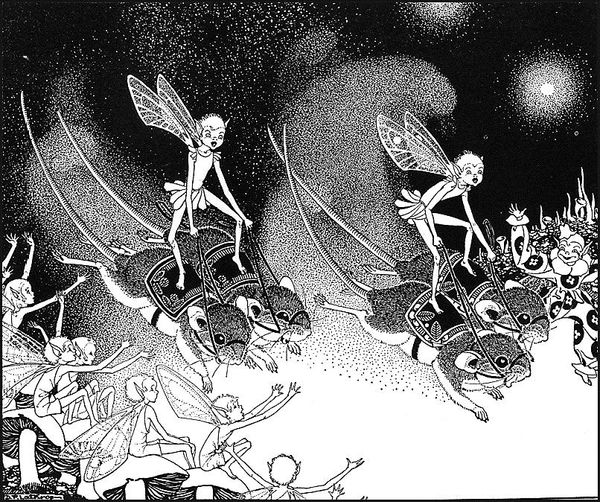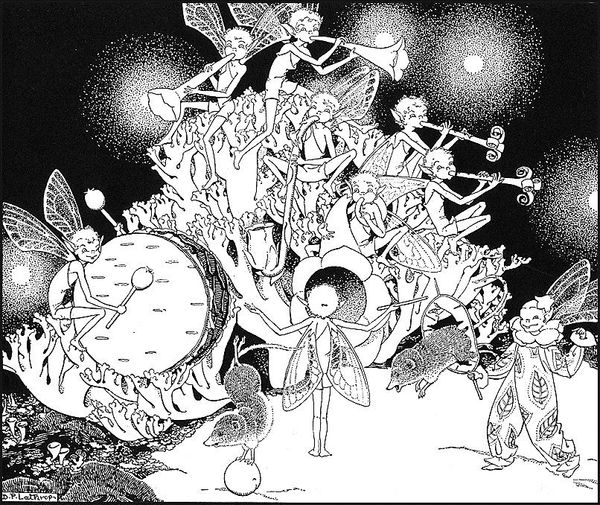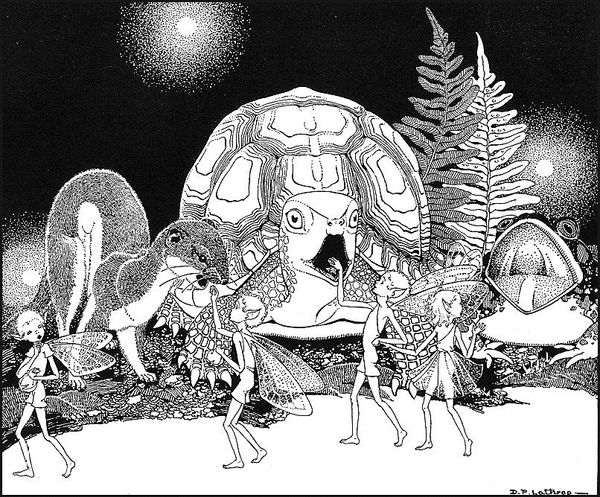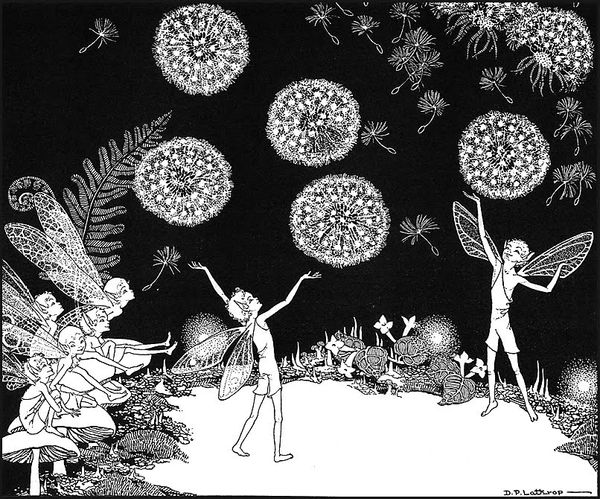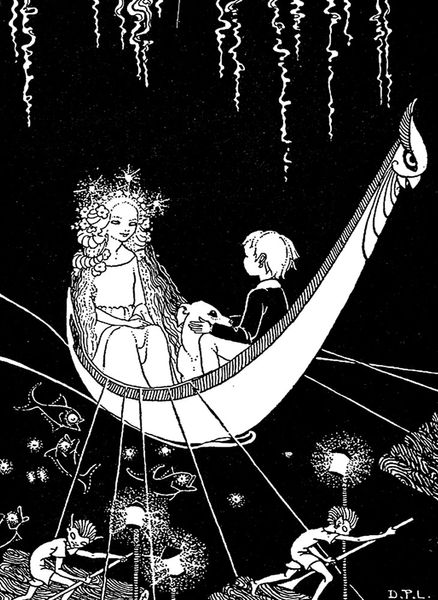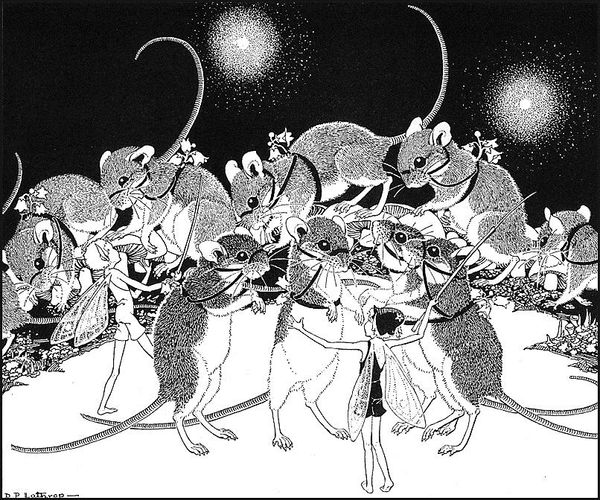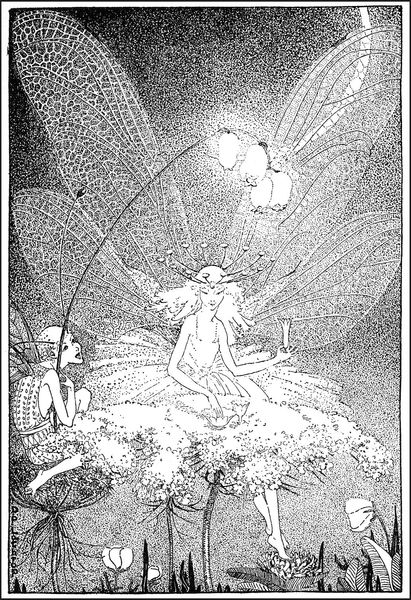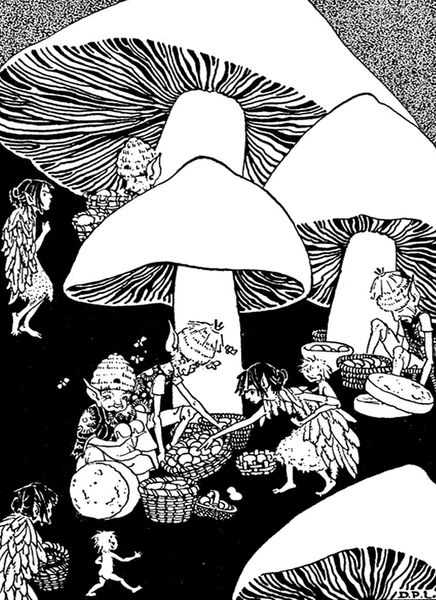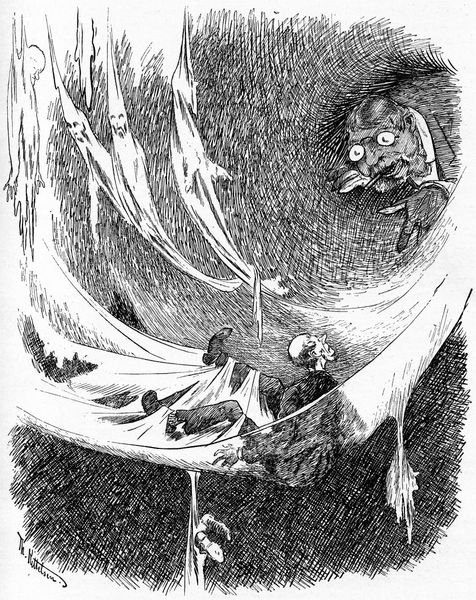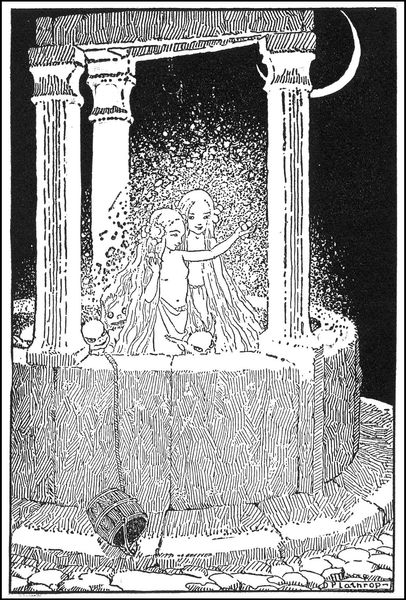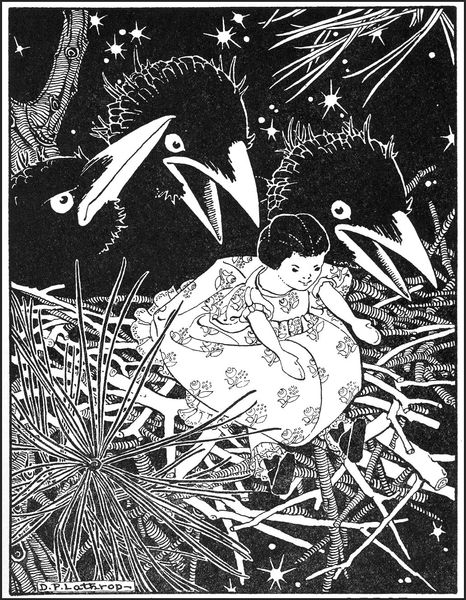
Copyright: Dorothy Lathrop,Fair Use
Editor: We’re looking at Dorothy Lathrop’s "The Fairy Circus" from 1931, an ink drawing on paper. The intricate details create a whimsical scene, but I find it rather strange, almost unsettling. What strikes you about it? Curator: The lithographic quality, achieved through ink, immediately calls attention to the means of production. The sharp contrast, the almost obsessive detail in rendering texture, reveals a dedication to the craft of illustration. Think about who consumes this image; primarily children, likely from privileged backgrounds who can afford illustrated books. Editor: That’s a good point. I hadn’t thought about who could access something like this during the Depression. The fairy imagery, though… where does that fit? Curator: The fairy motif itself becomes a commodity. Consider the social context of escapism during the Depression. These drawings provided not just art, but also a manufactured dreamscape sold to a specific demographic. Look at the cage: these squirrels performing tricks aren’t just innocent entertainment. The wire suggests confinement, labor, a deliberate manipulation of nature for profit. Editor: So, you're suggesting the fairies’ world, made available as escapist entertainment, is dependent on labor, both human and animal? Curator: Exactly. Lathrop isn't simply creating a fantasy, she’s implicated in a system. This art nouveau aesthetic served a purpose in the book industry, a calculated visual language marketed towards a certain type of consumer. Editor: It's much darker when viewed in this context. I appreciate how you drew my attention to the materials, labour, and class. Thanks! Curator: Examining the material conditions of its creation provides the necessary clarity.
Comments
No comments
Be the first to comment and join the conversation on the ultimate creative platform.
